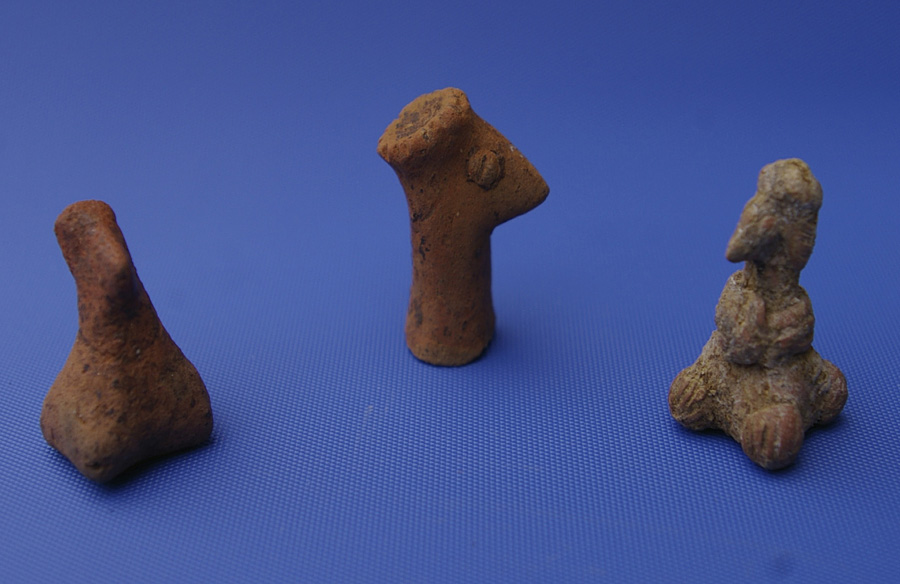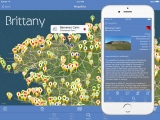<< Other Photo Pages >> Koutroulou Magoula - Ancient Village or Settlement in Greece in Central Greece
Submitted by davidmorgan on Thursday, 24 January 2013 Page Views: 3967
DigsSite Name: Koutroulou MagoulaCountry: Greece Region: Central Greece Type: Ancient Village or Settlement
Nearest Town: Neo Monastiri
Latitude: 39.220857N Longitude: 22.289916E
Condition:
| 5 | Perfect |
| 4 | Almost Perfect |
| 3 | Reasonable but with some damage |
| 2 | Ruined but still recognisable as an ancient site |
| 1 | Pretty much destroyed, possibly visible as crop marks |
| 0 | No data. |
| -1 | Completely destroyed |
| 5 | Superb |
| 4 | Good |
| 3 | Ordinary |
| 2 | Not Good |
| 1 | Awful |
| 0 | No data. |
| 5 | Can be driven to, probably with disabled access |
| 4 | Short walk on a footpath |
| 3 | Requiring a bit more of a walk |
| 2 | A long walk |
| 1 | In the middle of nowhere, a nightmare to find |
| 0 | No data. |
| 5 | co-ordinates taken by GPS or official recorded co-ordinates |
| 4 | co-ordinates scaled from a detailed map |
| 3 | co-ordinates scaled from a bad map |
| 2 | co-ordinates of the nearest village |
| 1 | co-ordinates of the nearest town |
| 0 | no data |
Be the first person to rate this site - see the 'Contribute!' box in the right hand menu.
Internal Links:
External Links:
I have visited· I would like to visit
Andy B has visited here

Around 300 figurines have been found all over the site, with some located on wall foundations. It is believed the purpose of figurines was not only as aesthetic art, but also to convey and reflect ideas about a community’s culture, society and identity.
More information at Antiquity.
Note: Archaeologists unearth more than 300 prehistoric clay figurines in Greece
You may be viewing yesterday's version of this page. To see the most up to date information please register for a free account.

Do not use the above information on other web sites or publications without permission of the contributor.
Nearby Images from Flickr




The above images may not be of the site on this page, but were taken nearby. They are loaded from Flickr so please click on them for image credits.
Click here to see more info for this site
Nearby sites
Click here to view sites on an interactive map of the areaKey: Red: member's photo, Blue: 3rd party photo, Yellow: other image, Green: no photo - please go there and take one, Grey: site destroyed
Download sites to:
KML (Google Earth)
GPX (GPS waypoints)
CSV (Garmin/Navman)
CSV (Excel)
To unlock full downloads you need to sign up as a Contributory Member. Otherwise downloads are limited to 50 sites.
Turn off the page maps and other distractions
Nearby sites listing. In the following links * = Image available
27.5km SW 217° Nikopolis stadium Ancient Village or Settlement
42.4km WNW 287° Mitropoli Temple Ancient Temple
43.2km ENE 64° Pherai* Ancient Temple
47.9km NNE 13° Larissa (Thessaly)* Ancient Village or Settlement
49.9km ENE 72° Sesklo* Ancient Village or Settlement
54.0km ENE 73° Dimini Mycenaean Tholos* Cairn
54.2km ENE 73° Dimini* Ancient Village or Settlement
57.0km ENE 76° Demetria Temple* Ancient Temple
73.0km NW 314° Theopetra Cave Cave or Rock Shelter
77.1km SE 144° Elateia Temple of Athena Kranaia Ancient Temple
79.1km NW 314° Metéora* Natural Stone / Erratic / Other Natural Feature
83.5km SE 141° Hyampolis Sanctuary of Artemis and Apollo* Ancient Temple
84.1km SSE 167° Delphi Temple* Ancient Temple
87.5km SE 142° Hyampolis* Ancient Village or Settlement
89.5km SE 142° Abai (Greece)* Ancient Village or Settlement
91.2km SW 216° Thermos* Ancient Village or Settlement
94.1km SSE 149° Lion of Chaeronea* Carving
95.6km SSE 147° Macedonian Tumulus at Chaeronea Chambered Tomb
100.0km SE 144° Orchomenos Temple Ancient Temple
100.3km SE 144° Treasury of Minyas* Cairn
100.8km SSE 150° Lebadeia Temple of Zeus* Ancient Temple
103.6km SW 234° Stratos necropolis* Ancient Village or Settlement
103.8km SW 234° Stratos theatre* Ancient Village or Settlement
104.1km SSW 207° Velvina Temple Ancient Temple
104.4km SW 234° Stratos Temple of Zeus* Ancient Temple
View more nearby sites and additional images






 We would like to know more about this location. Please feel free to add a brief description and any relevant information in your own language.
We would like to know more about this location. Please feel free to add a brief description and any relevant information in your own language. Wir möchten mehr über diese Stätte erfahren. Bitte zögern Sie nicht, eine kurze Beschreibung und relevante Informationen in Deutsch hinzuzufügen.
Wir möchten mehr über diese Stätte erfahren. Bitte zögern Sie nicht, eine kurze Beschreibung und relevante Informationen in Deutsch hinzuzufügen. Nous aimerions en savoir encore un peu sur les lieux. S'il vous plaît n'hesitez pas à ajouter une courte description et tous les renseignements pertinents dans votre propre langue.
Nous aimerions en savoir encore un peu sur les lieux. S'il vous plaît n'hesitez pas à ajouter une courte description et tous les renseignements pertinents dans votre propre langue. Quisieramos informarnos un poco más de las lugares. No dude en añadir una breve descripción y otros datos relevantes en su propio idioma.
Quisieramos informarnos un poco más de las lugares. No dude en añadir una breve descripción y otros datos relevantes en su propio idioma.